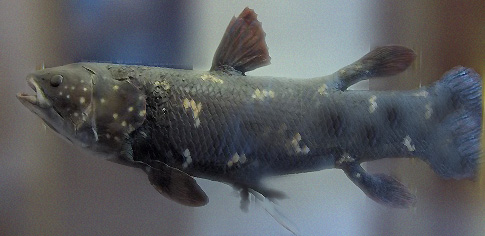“Maybe this world is another planet’s hell.” — Aldous Huxley
“Human Timepiece”
“J.D. Chevalley, a native of Switzerland, has arrived at an astonishing degree of perfection in reckoning time by an internal movement. In his youth he was accustomed to pay great attention to the ringing of bells and vibrations of pendulums, and by degrees he acquired the power of continuing a succession of intervals exactly equal to those which the vibrations or sounds produced.–Being on board a vessel, on the Lake of Geneva, he engaged to indicate to the crowd about him the lapse of a quarter of an hour, or as many minutes and seconds as any one chose to name, and this during a conversation the most diversified with those standing by; and farther, to indicate by the voice the moment when the hand passed over the quarter minutes, or half minutes, or any other sub-division previously stipulated, during the whole course of the experiment. This he did without mistake, notwithstanding the exertions of those about him to distract his attention, and clapped his hands at the conclusion of the time fixed. His own account of it is thus given:–‘I have acquired, by imitation, labour, and patience, a movement which neither thoughts, nor labour, nor any thing can stop: it is similar to that of a pendulum, which at each motion of going and returning gives me the space of three seconds, so that twenty of them make a minute–and these I add to others continually.'”
— The Mirror of Literature, Amusement, and Instruction, Jan. 15, 1831
Surf and Turf

The coelacanth, a prehistoric fish, was thought to have died out 65 million years ago — until a museum curator noticed one in a South African fish catch in 1938.
When a second specimen appeared in 1952, prime minister Daniel François Malan exclaimed, “Why, it’s ugly! Is this where we come from?”
To Boldly Go
Captain Kirk never actually said “Beam me up, Scotty” in any Star Trek episode or movie.
Semordnilaps
A palindrome is a word or phrase that is spelled the same backward and forward. A semordnilap (“palindromes” spelled backward) produces a different word when reversed:
flog — golf
edit — tide
knits — stink
leper — repel
lager — regal
pupils — slipup
drawer — reward
diaper — repaid
Pssst

The National Statuary Hall in the United States Capitol is a “whispering gallery” — because of the room’s shape, whispers at one end of the room can be heard clearly at the other.
In a Word
leiotrichy
n. straight-hairedness
Gil Perez
On Oct. 24, 1593, a man suddenly appeared in the Plaza Mayor of Mexico City. He was wearing the uniform of the guards of Malacanang Palace in the Philippines, and he claimed he had no idea how he had arrived in Mexico.
The man said that his name was Gil Perez and that was a Spanish soldier of the Filipino Guardia Civil. Moments earlier, he said, he had been on sentry duty at the governor’s palace in Manila. He said the governor, Don Gómez Pérez Dasmariñas, had been assassinated.
Perez refused to believe he was in Mexico City, as he had received his orders in Manila on the morning of Oct. 25, which now lay in the future. The Inquisition questioned Perez, but he could only repeat that he had traveled from Manila to Mexico “in less time than it takes a cock to crow.”
Two months later, news arrived by a Filipino ship that Manila’s governor had indeed been assassinated on Oct. 23, and witnesses confirmed that Gil Perez had indeed been on duty in Manila. One of the ship’s passengers said he recognized Perez and swore that he had seen him in the Philippines on the day of the assassination. Perez eventually returned to the Philippines and took up his former position as a palace guard.
Historians point out that this story didn’t appear in writing until a century after it supposedly happened, and no records of Perez’s imprisonment or interrogation have been found, so there’s no way to know what the truth is.
Low Expectations
The first Harry Potter book was given a print run of only 1,000 copies.
Today, these copies are valued at between £16,000 and £25,000 each.
Vox Piscis
On June 23, 1626, a fishmonger in Cambridge, England, gutted a large cod and found a book inside. Wrapped in sailcloth, it turned out to be a discourse on the sacraments written by Protestant priest John Frith. Before being burned at the stake in 1533, Frith had been detained in an Oxford fish cellar.
A Mr. Mead, fellow of Christ’s College, Cambridge, wrote, “I saw all with mine own eyes, the fish, the maw, the piece of sailcloth, the book … only I saw not the opening of the fish, which not many did, being upon the fish-woman’s stall in the market, who first cut off his head, to which the maw was hanging, and seeming much stuffed with somewhat, it was searched, and all found as aforesaid.”
If that sounds, well, fishy, Mead says, “He that had his nose as near as I yester morning, would have been persuaded there was no imposture here.”
Impressed, Cambridge reprinted the volume as Vox Piscis — “The Voice of the Fish.”
